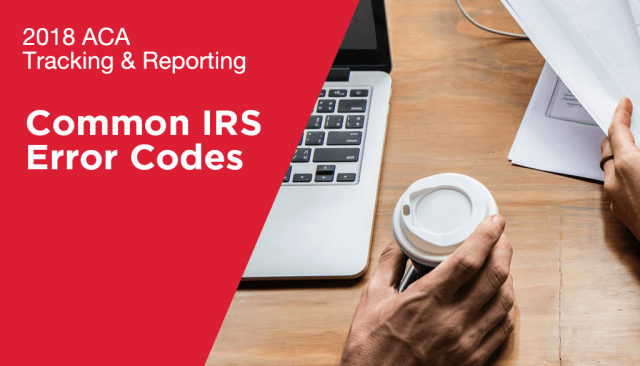Handling compliance with the Affordable Care Act
Points North • July 9, 2019
If you're the one in charge for handling compliance with the Affordable Care Act (ACA) reporting and audits then read on; those who aren’t compliant will face penalties from the IRS. But, as with anything that requires forms and filing, demonstrating ACA compliance on paper is a complicated process.
And, for ACA reporting, employers may feel particularly overwhelmed by the process. The ongoing responsibilities of taxes are hard enough, given all the forms. But, in fact, staying compliant comes down to preparation and organization.
Step 1: Track employer-mandate requirements.
Once full-time employees are identified, the next step is to track and document compliance with employer-mandate requirements. In other words, is there proof that coverage was offered to all eligible full-time employees?
Keep track of the dates that coverage was offered to each employee and when employees may have waived that coverage. Review 1094 and 1095
instructions to be sure that all information needed is readily available. Establish a process to track and organize this information in one place throughout the year to make ACA compliance easier.
Step 2: Report the cost of employer-sponsored group health plans.
Employers must complete an additional step when preparing tax forms to be ACA-compliant. Employers are required to report the cost of employer-sponsored group health plans on box 12 of the W-2 form to show workers the total cost of their individual healthcare in relation to the specific plan they use.
However, there are some exceptions. Employers who provide retired or former employees with healthcare coverage, but do not provide them a W-2, do not need to create that document just to report the cost of coverage. In addition, employers who give out fewer than 250 W-2 forms are not required to report the cost of coverage.
When reporting the cost of coverage is required, remember to include the total cost -- both the company’s and the employee’s contributions.
Step 3: Identify full-time employees.
The first step in ACA compliance is to determine who is a full-time employee. In 2016, companies with 50 or more full-time or full-time equivalent employees must offer minimum essential coverage to at least 95 percent of these full-time employees. But, how are full-time and full-time equivalent employees determined? Does the company’s definition align with the regulations?
To get a total number of full-time equivalent employees, use the IRS formula. Add up the hours that non-full-time employees are paid during a year and divide the total by 2,080. The answer is the number of full-time equivalent employees.
To complete the formula accurately, use technology to better track employee hours. Employees don’t always fill out timesheets correctly: They often include errors -- especially when it comes to overtime and holiday hours. HR software can automatically track hours to better manage employees and stay ACA-compliant.
Step 4: Educate employees.
ACA compliance is confusing for employers, but it can seem even more complicated for employees unfamiliar with new laws and forms.
This year, employees will receive new 1095 tax forms from either their employer or their insurance carrier, and they need to know what to expect. Educate employees on these new forms: what information they will contain and the purpose of the form. Send them information to review before they receive the forms, and walk them through the process when the new forms arrive.
In addition to educating employees on new forms, employers also need to provide employees with the correct information about their benefits and coverage. Do employees need a summary plan description or a summary of benefits and coverage, and when do they need them? Review the requirements to provide employees with the right information at the right time.
When dealing with ACA, reporting may seem even more complicated and overwhelming. But, if you’re prepared and have the right information, the process doesn’t have to be so scary. Please reach out to us today to inquire about having Who's Where help you with this process.

Once employers have familiarized themselves with the ACA obligations, they should also know of the penalties associated with non-compliance. Identifying and paying for full-time employees is fairly easy because of the straightforward details of their job but for variable hour employees’, it is not as simple. Some organizations make use of the ‘limiting’ strategy to manage such schedules but this strategy as its own set of problems. Problems such as workforce scheduling and variable labor requirements are factors that make this strategy impracticable. We’ve combined some of the best ways to ensure ACA compliance in this article and examined how ‘guidance’ can help you limit penalties.

The new year brings new policies and regulations, so it's important to do a comprehensive review and update of your legal and HR compliance to make sure that you're on top of any new laws and regulations. Begin 2020 on the right foot, with the knowledge you'll need to answer any questions from corporate leadership, supervisors, and employees. Here's what you need to know.

As the fiscal year closes the employers have many queries regarding the status of the Affordable Care Act (ACA) Reporting. It is questioned every time the tax filing season looms. The answer to all these queries is that Yes! ACA is still the law and employers who tend to ignore their obligations towards ACA reporting can face some heavy penalties.

It is important to choose a reliable and secure data aggregation solution which provides you with the best data. If you manage to get financial data which is cleaned and enriched then you can make accurate assessments of the financial situation of your customers. Following are some of the things which you should look for while choosing a solution to data aggregation.

Due to the complexity of the process, utilizing a reputable software vendor to file your 1094/1095 data electronically with the IRS is considered to be a best practice. One reason for this is that if it turns out that there’s a problem with some of your ACA data, the IRS doesn’t necessarily make it easy to figure out what went wrong.

The past few years have brought forth a great deal of uncertainty surrounding the Affordable Care Act. The topic of ‘repeal and replace’ was front and center during the 2016 presidential and congressional elections, and 2017 saw several attempts at repeal, none of which were ultimately successfully at scrapping the law in its entirety.





